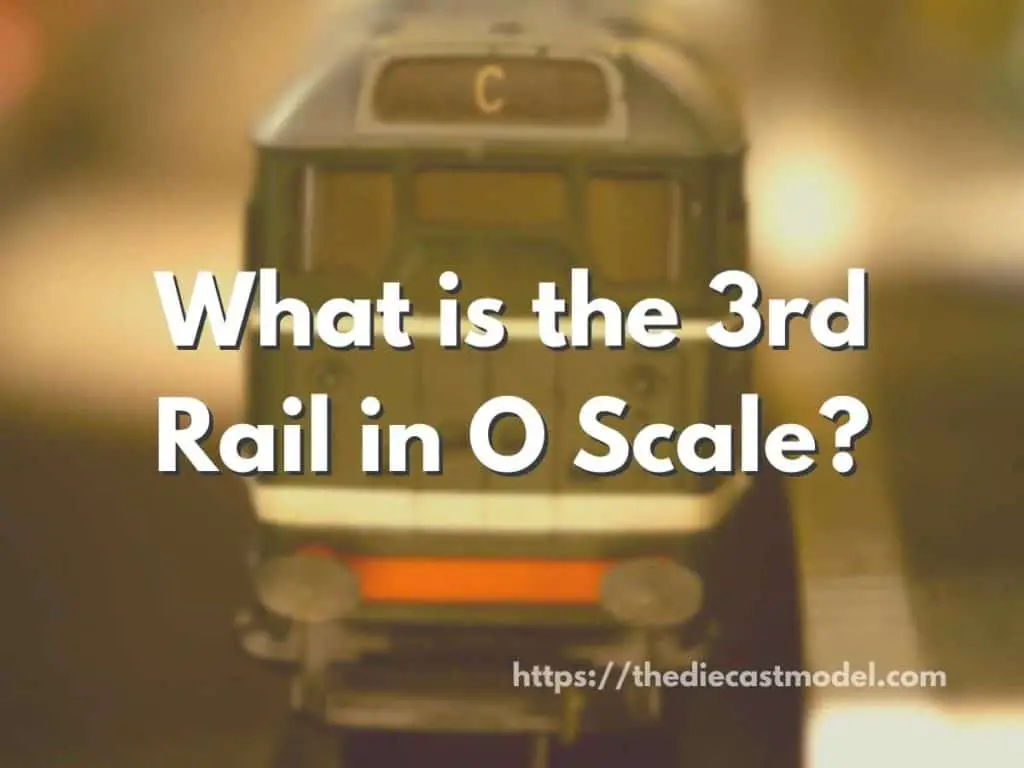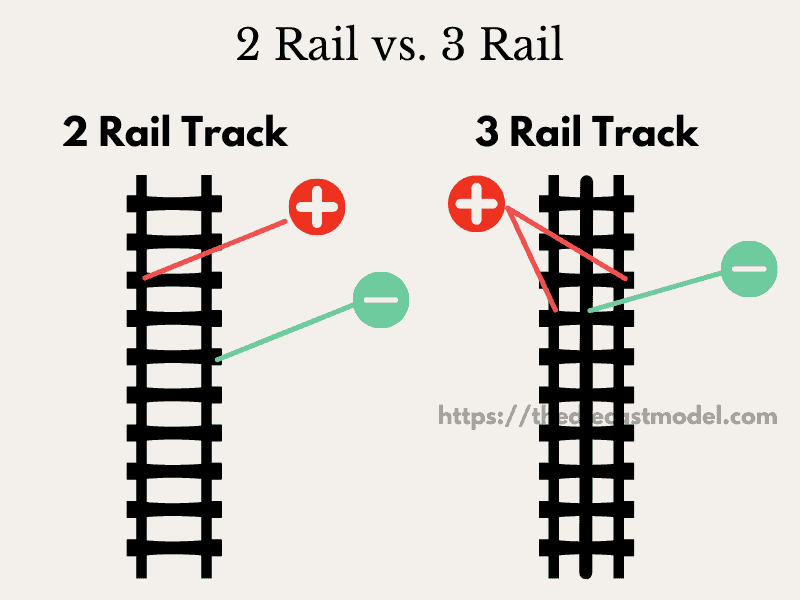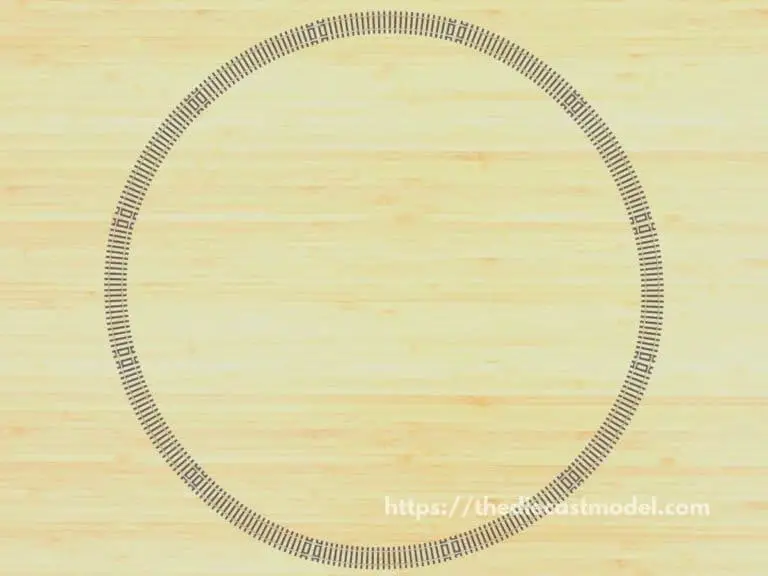What is the 3rd Rail in O Scale and Its Purpose?
If you try visiting an O scale train modeler, you might wonder why their tracks have three rails instead of two. The third rail is a popular choice for O scale modelers, and some HO and N scale modelers started switching to the O scale. But what is the 3rd rail for? What is its purpose? Is there a history behind it? We’ll look into all of this in this post.
O scale model trains have a third rail because it acts as the power source for motors. The third rail prevents return loops that can cause short circuits since it separates the positive and negative charges. This is because the 3rd rail acts as the return, and the other two rails act as the positive charge.
This post will discuss the 3 rail system and why it is used on many O scale model trains today. Furthermore, we will talk about their compatibility with the 2 rail system.

Why does the O scale have 3 rails?
At the start of the 20th century, train model manufacturers had some problems with the wiring in their products. It seems that short circuits and incorrect wiring are common for modelers.
Running model trains on a 2 rail track caused many train models to break down fast. Furthermore, short circuits caused many problems, such as overheating and exploding motors.
In the early 1900s, technology wasn’t that advanced to prevent short circuits. So that’s where the manufacturers decided to make the wiring simpler.
To prevent short circuits and make the wiring simpler, manufacturers started to sacrifice realism by changing the model train’s wiring. This led to the birth of the 3 rail system.
Compared to the older 2 rail system, the 3 rail system allowed modelers a more straightforward and safer alternative.
Furthermore, the 3-rail system became popular on toys sold in stores because of its simpleness.
Did you know? Because of the advancement of technology, the two-rail system made a comeback in the 1920s. However, 3-rails are already extremely popular, and most modelers have stuck to 3-rail up to this date.
But why is the 3-rail system simpler than the 2 rail?
The 3-rail system used a third rail placed in the center of the track. This properly separated the positive and negative charges, reducing short circuits.
Furthermore, the outside rails became an insulator, making them safer than 2-rail tracks.
3-rail tracks also allowed tighter curves which 2-rail tracks don’t offer.
Since O scale trains are very large, these tighter curves saved space for the layout making 3-rail tracks a popular choice for modelers.
Until now, 3-rail tracks have been popular among the O scale modelers. But are the standard 2-rails that bad?
With our advancement in technology, 2-rail tracks can now do what the 3rd rail can, such as tight curves and simpler wiring. However, since 3-rail tracks have been dominant for about a century, it is still the standard up to this day.
But what is the principle behind these two rail tracks? Can you touch the 3rd rail? That’s what we will talk about in the next section.
What happens if you touch the third rail?
You will not get electrocuted when touching the third rail of a model train because its voltage is very low for us to feel it. This is because model trains only run with about 12 volts of electricity. However, you can get electrocuted by touching the third rail of an actual train since it can go as high as 600 volts.
As of now, you probably have enough understanding of why the third rail became popular.
While it sacrifices realism, it offers a way to make the wiring easier. Furthermore, it makes the hobby safer since it prevents short circuits.
But why? What does it have, and is touching it bad for us?
Touching the third rail won’t electrocute us since it uses a very low voltage. Generally speaking, most DC model trains run on 0-12 volts, while some DCC trains can run 22 volts.
For more information regarding DC and DCC trains, please check this post: DC vs. DCC trains.
To compare, an actual train can electrocute since it can run up to 600 volts.
This big difference makes the train model’s 3rd rail safe.
However, if you’re keen on my explanation, I said earlier that the third rail isn’t realistic since trains don’t have a third rail.
The truth is, some electric trains have a third rail either on top or beside the track, which should be inaccessible to people.
However, actual trains don’t have a third rail at the center of the track.
Thus, even if some electric trains have a third rail, it isn’t located in the middle, unlike what’s seen in model trains.
Now, let’s talk about the principle behind the two types of rails.
Let’s start with the two rails.
Here is an illustration differentiating two rail and three rail systems.

Based on the illustration, the two rails separated the two charges on each rail. Therefore, one will be positive, and one will be negative.
Because of this, wiring can become complex. For example, the train will run backward when you interchange the positive and the negative charge.
Furthermore, this made no insulation between the two which causes short circuits.
The three-rail tracks were designed to prevent short circuits and standardize the flow of electricity.
If we go back to the picture, we can see that on a three-rail system, the positive charge is on the sides while the negative will always run on the middle. This means there is no way this can interchange, unlike the two rail tracks.
This difference looks minor, but in the old days, this was huge since it prevented a lot of short circuits and made layout building easier since we didn’t need to do a lot of sectioning on 3-rail tracks.
But why am I briefly explaining the principles behind the two and three rail tracks? That’s because we will talk about compatibility in the last section.
Can 2 rail O scale run 3 rails?
2 rail O scale trains can’t run on 3 rail tracks because they use different wheels and wiring. Since the location of the positive and negative charges differ between the two and three rail tracks, they aren’t compatible. However, trains can run on both tracks, provided that their wheels are compatible.
This post changed from a simple history lesson to a brief introduction to electrical engineering.
However, these concepts are essential to understanding the compatibility of both tracks.
Since the charges of both tracks are different from one another, 2 rail tracks aren’t compatible with 3-rail tracks.
If we go back to the illustration above, we can see that it isn’t possible since the location of the charges is different. For example, if you use two-rail wheels on a three-rail track, there is no way the system would get the return or negative charge. This means the motor won’t run.
However, while they aren’t compatible with one another, you can change the train’s wheels to fit the layout.
For example, if you have two-rail wheels, you can change it to three-rail wheels, and it will run smoothly on a three-rail track.
Basically, you can run any train on both the 2 and 3 rail track provided that the wheels are compatible.
If the wheels aren’t compatible, you can change the wheels to run on the track you use.
What’s next? We had a long discussion on the O scale 3-rail tracks. If you want more about model trains, I made a post differentiating HO scale and N scale trains. If you’re interested, you can read it here: HO vs. N scale.







